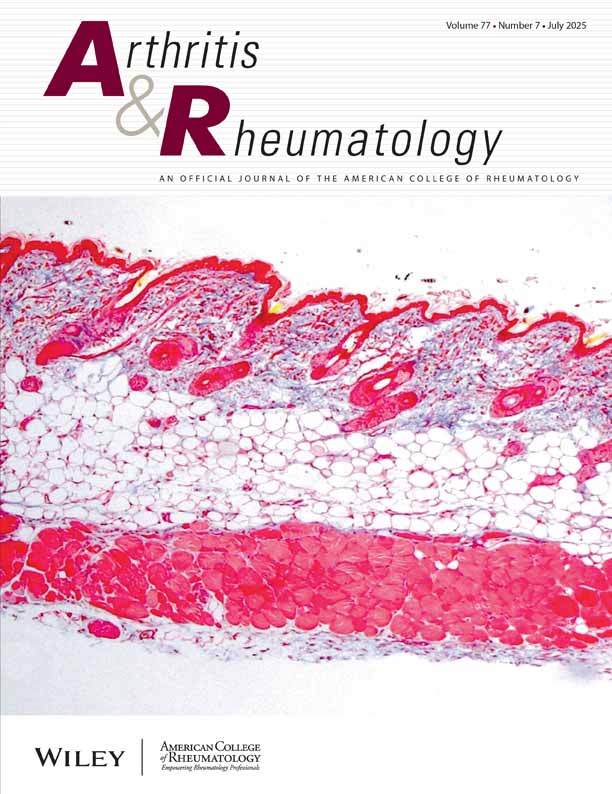Homocysteine levels and disease duration independently correlate with coronary artery calcification in patients with systemic lupus erythematosus
Abstract
Objective
To compare the incidence and extent of coronary artery calcification (CAC) as measured by electron beam computed tomography (EBCT) in patients with systemic lupus erythematosus (SLE) and controls, and to identify variables associated with CAC in patients with SLE.
Methods
Female patients with SLE and matched controls were recruited; EBCT of the coronary arteries was performed, and laboratory values (including the homocysteine concentration, the lipid level, the high-sensitivity C-reactive protein [hsCRP] concentration, the glomerular filtration rate [GFR], and the level of soluble CD154 [sCD154]) were determined. For patients, the Systemic Lupus International Collaborating Clinics/American College of Rheumatology Damage Index and the SLE Disease Activity Index scores were recorded. Tests of association between the CAC score and the above-mentioned variables were performed.
Results
The incidence of CAC was higher in patients with SLE than in controls (P = 0.009), and patients had a higher mean raw CAC (rCAC) score (87.9 versus 9.6 in controls; P = 0.02). In particular, more CAC-positive patients than CAC-positive controls had rCAC scores above the 75th percentile (P = 0.003). Among both patients and controls, those with CAC were ∼10 years older than those without CAC. In addition to age, a significant determinant of positive CAC status in both groups was the number of cardiovascular risk factors. In patients with SLE, CAC was associated with a higher homocysteine concentration, a lower GFR, and longer disease duration. In controls, the total cholesterol level correlated positively with CAC. When multivariate logistic regression methods were applied to candidate explanatory variables, homocysteine concentration, age, and disease duration (but not the levels of sCD154 or hsCRP) contributed significantly to CAC status. The methylenetetrahydrofolate reductase C677T genotype was not a predictor of hyperhomocysteinemia or CAC status.
Conclusion
Among patients with SLE, the homocysteine concentration, the GFR, age, and disease duration were associated with CAC. CAC occurred more frequently and was more extensive in patients with SLE than in controls, suggesting that EBCT could be used to detect premature atherosclerosis in the former group. An elevated homocysteine concentration might identify patients with SLE who are likely to have premature atherosclerosis and who would benefit from evaluation of CAC by EBCT.




